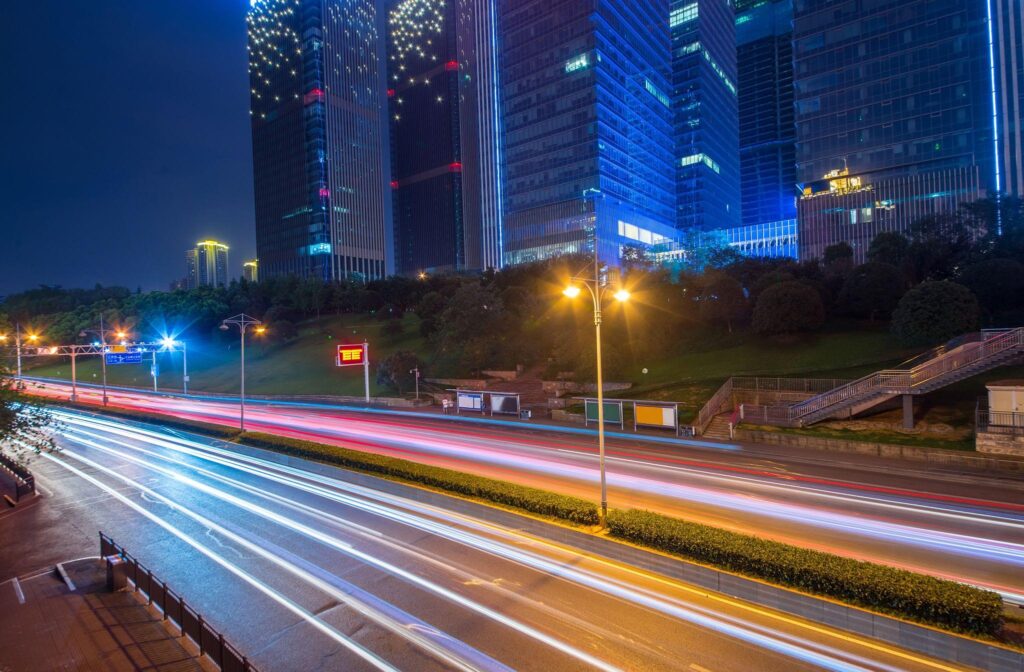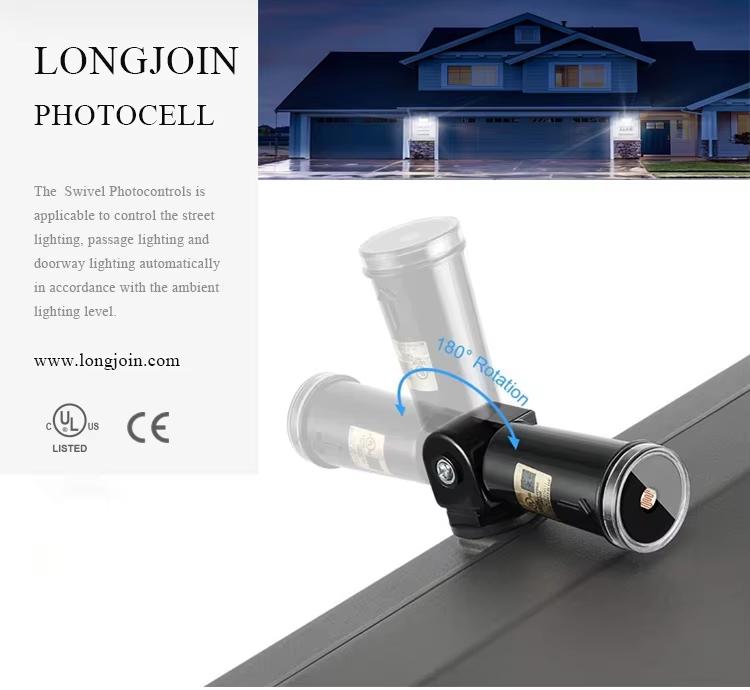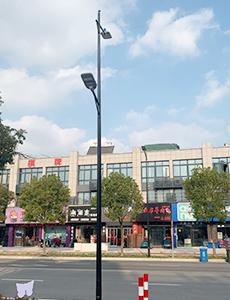Outline
- Introduction
- What Are The Challenges of Roadway Lighting in South America?
- Infrastructure Expansion Needs
- Complex Power Supply Environment
- Energy Saving Pressure
- Diverse Climate Conditions
- What Are The Functions and Advantages of Photocells
- What Are The Applications Of Photocontrollers
- Competitive Advantages of LongJoin Light Controllers in the South American Market
- Final Words
Is South America’s push for smart cities driving the need for improved roadway lighting?
As cities grow, effective and sustainable lighting systems become an absolute necessity. But the question remains as to how to balance reliable lighting with energy efficiency and sustainability.
Smart light controllers may be the solution. They maximize lighting efficiency, conserve energy, and endure varied climates. They also address issues such as voltage instability and increasing energy prices while improving road safety.
Let us see how they can affect South America’s road lighting environment.

What Are The Challenges of Roadway Lighting in South America?
1. Infrastructure Expansion Needs
Urbanization in South America is accelerating. This is leading to increased demand for effective roadway lighting. Some sources suggest that the continent has about 10% of the world’s 320 million street-lighting poles.
2. Complex Power Supply Environment
Are you aware of the impact of the not-so-perfect power distribution system in South America?
In the diverse climate of South America, with many developing economies, power supply issues are common. This leads to flickering lights, reduced equipment lifespan, and higher maintenance costs.
Addressing these inconsistencies is crucial to maintaining reliable roadway illumination.
3. Energy Saving Pressure
Why is there a pressing need in South America to balance energy savings with effective street lighting?
There are multiple facets to this question. However, generally, the global shift toward energy conservation and sustainability is the primary driver influencing South American energy consumption patterns.
While the task is difficult, some countries have made good progress. Details below show the impact of 72% LED street lighting in Buenos Aires.
| Category | Impact |
| Energy Savings | Reduced electricity consumption by 40%-70%, saving 44.5 million kWh annually |
| CO₂ Emission Reduction | Avoids 9,866 tons of CO₂ |
| Smart Lighting Control | Remote monitoring improves efficiency and responsiveness |
| Maintenance Optimization | Centralized control enables quick fault detection |
| Crime Reduction | Improved lighting enhances public safety |
While the region faces mounting pressure to adopt more sustainable solutions, advanced photo sensors maximize energy efficiency while meeting environmental goals.

4. Diverse Climate Conditions
From tropical rainforests to arid plains, South America has varied terrains. These conditions pose significant challenges to the reliability of lighting. The most common issues are water ingress, corrosion, dust penetration, etc.
What Are The Functions and Advantages of Photocells
Automatic Light Adjustment
One primary function of photo controllers is to adjust lights automatically. The Cambridge, Massachusetts, case study provides a compelling example of how much this can be beneficial. The city has installed street lighting systems equipped with photocell sensors. The results were awesome: an 80% drop in the use of energy, resulting in $500,000 saved per year.
Remote Monitoring and Management
How can cities efficiently manage street lighting maintenance? The UM9000 offers a solution. This system allows for remote control and monitoring of lighting networks. The results are real-time fault detection, maintenance scheduling, and lighting adjustment from a central point.
Environmental Design
It’s obvious that intelligent lighting systems extend lighting’s lifespan. Los Angeles switched to LED streetlights with low-power designs and installed light decay compensation. This yielded 64% energy savings or 114 gigawatt-hours per year.
In addition, this project realized around $10 million in yearly energy savings but also cut carbon emissions by 67,000 metric tons.
Adaptation to Various Electrical Conditions
Photocontrollers are designed to support a wide voltage range. This adaptability ensures consistent lighting performance, prevents damage from voltage irregularities, and extends the lifespan of lighting infrastructure.
Durability and Reliability
Another critical issue in South America is its harsh environmental conditions. Below is a summary of these conditions with corresponding real-world statistics.
| Environmental Condition | Statistics |
| Extreme Heat | In 2023 Chile, recorded 37.1°C, the the highest winter temperature |
| Intense Rainfall and Flooding | On March 7, 2025, Bahía Blanca, Argentina, experienced over 300 mm of rain in 8 hours |
| Wildfires | In 2024, wildfires burned more than 1.3 million hectares of the Pantanal |
In response to such challenges, the street light photocells are engineered with high Ingress Protection (IP) ratings. This renders them waterproof, dustproof, and shock-resistant.
So whether it’s about humid tropics or arid deserts, street light photocells reduce maintenance needs and enhance the longevity of street lighting systems. Such features improve operational efficiency, lower maintenance costs, and provide uniform lighting performance in urban areas.
What Are The Applications Of Photocontrollers

Where can intelligent light Controllers make the most impact? Well, they can prove to be vital additions in a number of roadway settings. The pointers below provide some glimpses into this regard.
- On busy urban roads and highways, they adjust brightness based on real-time traffic. This improves safety while saving energy.
- In community areas and parks, they offer precise, soft lighting. This is an effective counter against light pollution while enhancing residents’ security.
- By integrating into smart city networks, they streamline centralized monitoring and optimize energy use.
- In remote and rural areas, when combined with solar lighting systems, they provide efficient, off-grid lighting solutions.
These applications not only boost visibility but also support sustainability and cost-saving efforts.
Competitive Advantages of LongJoin Light Controllers in the South American Market
The South American photocell light sensor market is highly challenging owing to its diverse terrain. While other photocells find it challenging to survive in such conditions and climates, LongJoin products work effectively in these conditions.
Here’s why.
- Comprehensive certification ensures their reliability and safety
- Intelligent and customized design with advanced wireless communication protocols
- Tailored solutions to meet specific client needs.
- High Cost-Performance Ratio offers decreased cost of light sensors without compromising quality.
- Perfect After-Sales Service
The table below expressesively outlines various competitive advantages of LongJoin photocells and their real-world impact.
| Competitive Advantage | Description | Real-World Impact |
| Comprehensive Certification | Complies with ISO/IEC 14908, ANSI C136.10, and local South American standards. | Ensures seamless integration with existing infrastructure and regulatory approval. |
| Intelligent & Customized Design | Supports Zigbee, LoRa, and NB-IoT communication, with AES-128 encryption for security. | Provides reliable remote control, reducing maintenance costs and enhancing security. |
| High Cost-Performance Ratio | In-house R&D and large-scale production reduce costs while maintaining high quality. | More affordable than competitors without sacrificing durability or performance. |
| Energy Efficiency Features | Adaptive lighting adjusts brightness based on real-time needs, reducing power consumption. | Lowers energy costs by up to 60%, extending lamp life and minimizing replacements. |
| Durability & Environmental Adaptability | IP66-rated waterproof, dustproof, and surge-protected for harsh climates. | Operates reliably in tropical, humid, and high-voltage fluctuation environments. |
| Perfect After-Sales Service | Offers multilingual technical support and localized assistance in South America. | Faster troubleshooting, reducing downtime and improving customer satisfaction. |
Final Words
Intelligent light controllers are revolutionizing roadway lighting in South America. They enhance efficiency, reduce energy consumption, and adapt to complex power conditions. For cities and businesses seeking reliable, high-performance solutions, Chi-Swear offers expertly engineered LongJoin light controllers backed by robust certifications and local support.
External Links
- https://www.mdpi.com/1996-1073/16/2/915
- https://www.c40.org/case-studies/cities100-buenos-aires-smart-led-retrofit-optimizes-resources/
- https://www.americancityandcounty.com/government-technology/led-streetlights-help-massachusetts-city-reach-sustainability-goals
- https://lalights.lacity.org/connected-infrastructure/led_program.html






